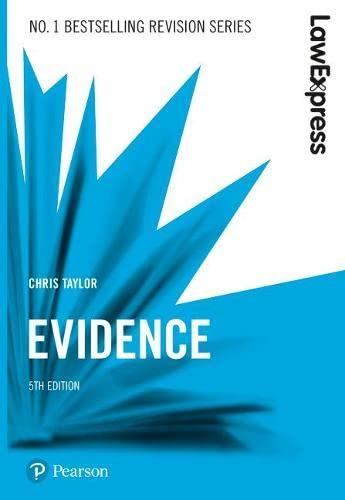Question
1 Which of the following is part of Canadian law? a. Common Law b. Statutes c. Regulations d.All of the above 2 Which of the
1 Which of the following is part of Canadian law?
a. Common Law
b. Statutes
c. Regulations
d.All of the above
2 Which of the following is true about the common law legal system?
a. Lower courts are bound by decisions of higher courts
b. Higher courts are bound by decisions of lower courts
c. Courts are bound by their own past decisions
d.There is no case law
3 In which of the following is a dispute resolved by an impartial third-party making a binding decision?
a. None of the above
b. Negotiation
c. Mediation
d.Arbitration
4 Steve is looking to hire a lawyer to help him receive compensation for injuries he suffered in a car accident. It is not entirely clear who is to be blamed for the accident, Steve or the other driver. How is the lawyer likely to charge Steve?
a. Hourly Fee
b. Fixed Fee
c. Contingency Fee
d.The lawyer is unlikely to take Steve as a client.
5 Which of the following correctly represents the federal court hierarchy in Canada (low to high)?
a. BC Provincial Court, BC Supreme Court, BC Court of Appeal
b. Federal Court, Federal Court of Appeal, Supreme Court of Canada
c. BC Provincial Court, Federal Court, Supreme Court of Canada
d. BC Provincial Court, Federal Court of Appeal, BC Supreme Court
6 Which of the following is NOT a limitation to special/specific damages under contract law?
a. Amount of loss
b. Causation
c. Mitigation
d. Non of the above
explanation not needed
Step by Step Solution
There are 3 Steps involved in it
Step: 1

Get Instant Access to Expert-Tailored Solutions
See step-by-step solutions with expert insights and AI powered tools for academic success
Step: 2

Step: 3

Ace Your Homework with AI
Get the answers you need in no time with our AI-driven, step-by-step assistance
Get Started


